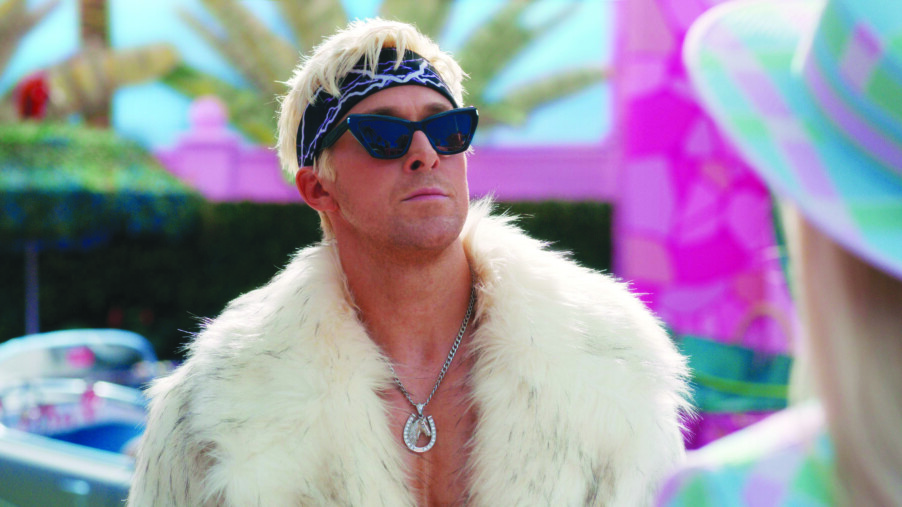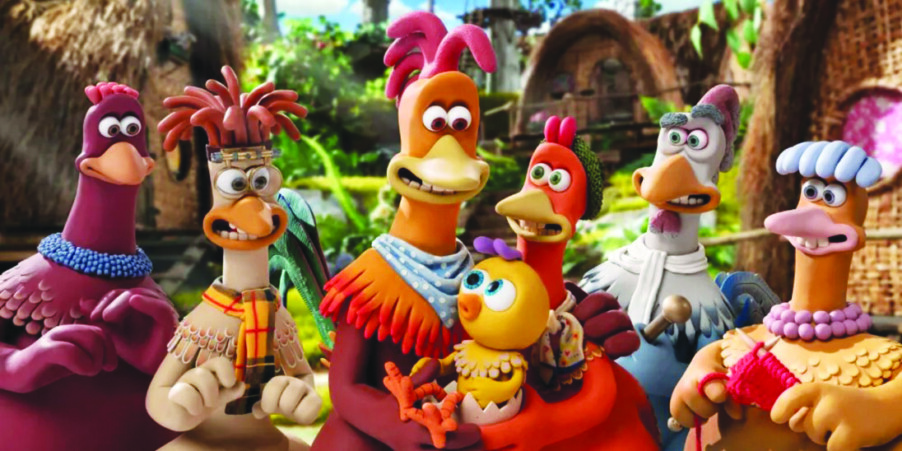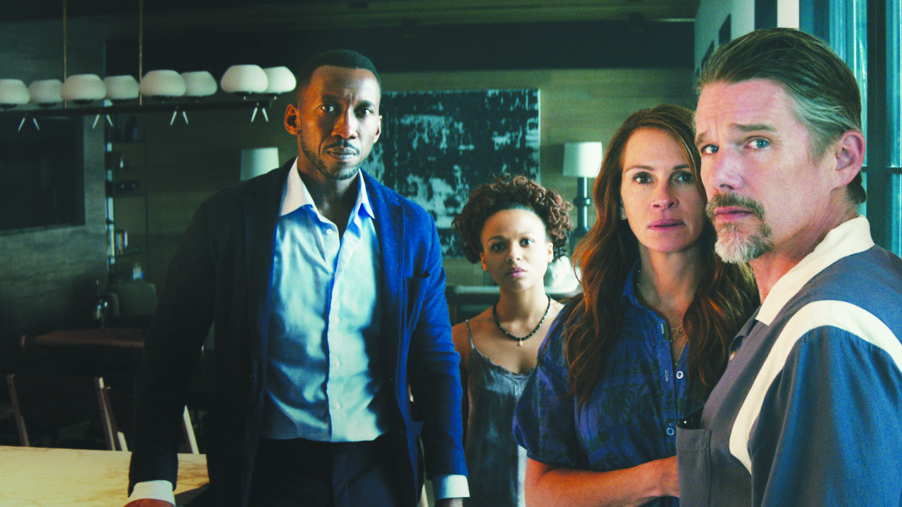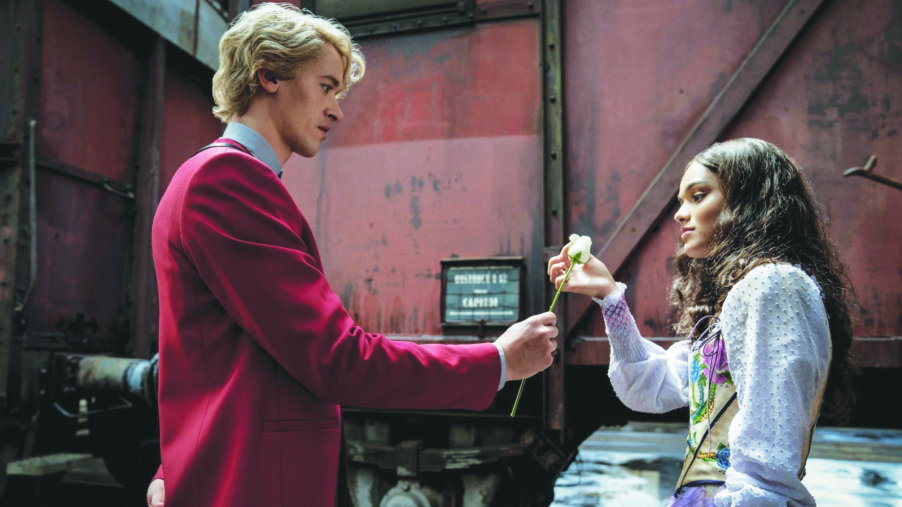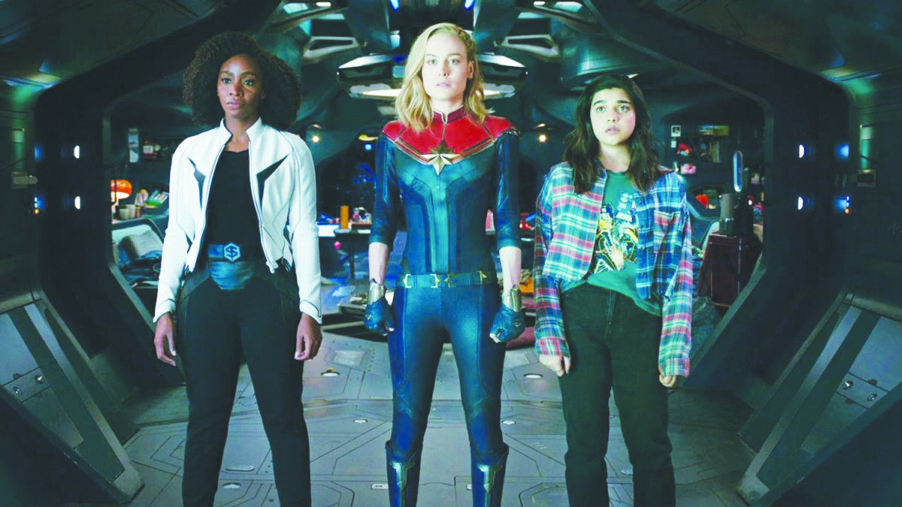Considering the many facets of the cinematic landscape in 2023
Barbie is my favorite movie of 2023.
Why pretend otherwise? It’s solid gold (solid pink gold) all the way to its core, with excellent performances, writing, casting, camera work, production design and use of music. It has great details happening in every shot. It excellently captures the toy element of the Barbie world, from the way people move (that Margot Robie sideways flop when she sits down despondently is perfect) to how extremely secondary Ken is in kid Barbie play. I rewatched Barbie recently (it’s available for rent and purchase and streaming on Max) and caught little moments that I don’t think I did the first time. I also gained a new appreciation for the absolutely knockout performance by Ryan Gosling; if ever Oscar wants to award a comedic (at least, on the surface) performance, this would be the one. Watch it — watch it and be impressed that Greta Gerwig could get this all done and put so much of her own sensibility in a toy tie-in movie.
As much as 2023 is the year of Barbie and as much as a Barbie is a movie I’m certain I’ll watch again, probably before we even make it to this March’s Oscar ceremony, which better have some serious Barbie representation among the nominees, that wasn’t the only delightful, gleeful memorable movie watching experience I had this year. I speak, of course, of Slotherhouse, a Hulu movie about a killer sloth. No, let me back up, Slotherhouse is a mostly (at least for its first two-thirds) played-straight movie about sorority house drama where some of the sorority sisters mysteriously disappear and also a sloth adopted by one of the girls is giddily murderous. I described the sloth, named Alpha, in my review thusly: “Alpha is a little shy of standard teddy bear size and has a ‘sloth puppet stretched over Teddy Ruxpin frame’ look.” This movie perfectly balances tone and it is an absolute blast.
What else is worth a mention from 2023?
• Movie is absolutely, wonderfully, as advertised: Part of what is great about Slotherhouse is that it is exactly what you think it is and it does that — that being sorority-sister-murdering sloth — perfectly. And, I will take that over half-assed execution of Serious Film That Wants to Say Something any day. (Is it unfair to put Oppenheimer, now available for rent or purchase, in that latter category? You watch and decide; I thought it was well-made but also, just, sigh, eyeroll, OK, movie, calm down.)Other movies that do well with a goofy, as-stated concept include Plane (rent or purchase and streaming on Starz), the Gerard Butler movie about action on and related to an airplane. Sometimes Butler is doing “plane” (he says stuff like “thrust” and “landing gear”), and sometimes he is off the plane fighting bad guys in order to save the plane passengers. Sink into this dumb movie like a comfortable chair and enjoy how little thought it requires of you.
Also in this category: Cocaine Bear (rent, purchase and on Prime Video). As is stated by Alden Ehrenreich’s character in the trailer “the bear, it did cocaine.” Elizabeth Banks masterfully directs this movie where, yeah, there are some side plots about drug dealers and a cop and forest rangers and some kids cutting school, but mostly a bear does cocaine and chases people. Adults like the late Ray Liotta and Margo Martindale and Keri Russell show up and have an absolute blast.
• Horror and comedy — two great tastes that taste great together: That you might hurt yourself laughing is the scariest element of nominal horror movie Slotherhouse. But several movies this year proved that comedy and horror work great together. The Blackening (rent, purchase and streaming on Starz) features a group of friends spending Juneteenth weekend together and finding themselves the target of both systematic racism and a murderous psycho. Leave the World Behind (Netflix) is not as big in its comedy but you can’t convince me that comedy isn’t largely what it’s doing in this seemingly cool psychological thriller about, maybe, the end of the world? Totally Killer (Prime Video) takes a modern teenager (played by Kiernan Shipka) back to 1987 to the Halloween when her mother’s high school friends were murdered — and back to her mother as a teenage Heathers-esque jerk. From the Gen Z shock at the “Hooters waitress”-like gym uniforms to the perfect fringed white jacket Shipka wears, the movie is a hoot. Of course, the blend of absurdity and horror this year truly belongs to M3gan (rent, purchase and on Prime Video), the early-year release about a kid-sized robot doll and the horrors of same. This movie seems to hate technology and have no redeemable characters and I enjoyed both of those aspects. As I said in my review: “When I first saw the trailer for this movie, I probably thought something like ‘ugh, what ridiculous nonsense.’ After seeing it, though, my reaction is ‘What ridiculous nonsense! 10 out of 10! Four stars! No notes!’”
• The freshest popcorn: It was not a banner year for sequels, in my opinion. I left movies like Magic Mike’s Last Dance (rent, purchase, Hulu and Max) andCreed III (rent, purchase, Prime Video, Sling, Philo and, ha, MGM+) feeling like they were fine, a notch above OK, but not quite up to the standards of their predecessors. I had warmer feelings toward John Wick: Chapter 4 (rent, purchase and Starz), The Equalizer 3 (rent or purchase) and Mission: Impossible — Dead Reckoning Part One (rent or purchase), both of which deliver rollercoaster fun even if they aren’t the standouts of their series. My favorite of the sequel-franchise outings from this year is probably The Marvels (still in theaters; the internet predicts February as when it will land on Disney+). The Kamala Khan/Ms. Marvel-focused series Ms. Marvel is the only one of those Disney+ Marvel TV shows I’ve been able to bring myself to watch all episodes of and I loved it. Though this movie, a sequel to the story of Capt. Marvel/Carol Danvers (Brie Larson) and a movie introduction to adult Maria Rambeau (Lashana Lynch), didn’t have as much Kamala and the Khans as the show, we do still get her excellent mother Muneeba (Zenobia Shroff) and we get these three women working together and learning how to be part of a team. Carol and Kamala also have some of that Tony Stark and Peter Parker mentor/mentee energy, which is cute. And there are some nice weird moments that make this feel like more than just another interlocking piece of the MCU (unlike this year’s Ant Man and Guardians of the Galaxy movies, which I found to be a slog — they’re both on Disney+ if you want to see for yourself).
• “I am the fury”: The hands down best action-packed, save-the-day movie I saw this year was not part of a major franchise but it was part of what I think of as the Nida Manzoor cinematic universe. Manzoor is the creator of the excellent TV show We Are Lady Parts (worth the price of a month of Peacock, where you can find all six episodes of the so-far sole season; it is also available for purchase). She also wrote and directed this year’s Polite Society (rent, purchase and Prime Video). Would-be stuntwoman teenage Ria (Priya Kansara) is horrified when her big sister Lena (Ritu Arya) seems to be putting aside her art to settle for a marriage to a too-perfect Salim (Akshay Khanna), son of the suspicious (but awesome in her evilness!) Raheela (Nimra Bucha).
• “Let me be normal and regular like everybody else”: There is a spectacular triple feature to be had in Barbie, Polite Society and, to kick it off, Are You There God? It’s Me, Margaret (rent, purchase and Starz). This excellent adaptation of the Judy Blume classic features three strong performances in three stories of characters finding their way — Margaret (Abby Ryder Fortson) dealing with being 12 in a new school and the horrors of “your changing body” along with big questions about religion; her mom Barbara (Rachel McAdams) trying to figure out her place as the mom of an older kid and as a newly stay-at-home mom, and Margaret’s grandma/Barbara’s mother-in-law Sylvia (Kathy Bates), whose family is no longer in the city and who has to reconstruct her life for herself. Strong work all the way around, from the acting to the story adaptation.
• “You are so not invited…”: Honorable mention in the “taking tween/young teen girls and their feelings seriously” category goes toYou Are So Not Invited to My Bat Mitzvah(Netflix), starring Adam Sandler and his real-life daughters Sadie and Sunny. The way this comedy portrays the highs and lows of 13-year-old girl friendships is smart and funny and — triggering? Let’s just say it left me very happy to be decades away from 13.
• Animated: When I made my Vulture Movie Fantasy League picks (vulture.com; Joe Reid of This Had Oscar Buzz runs it and it’s great fun), I found myself struggling to limit my animated films. I personally loved Nimona (Netflix), a plucky adventure with a sophisticated heart about what makes a hero and what makes a monster. Teenage Mutant Ninja Turtles: Mutant Mayhem (rent, purchase and Paramount+) and Spider-Man: Across the Spider-Verse(rent, purchase and Netflix) both feature solid storytelling and eye-catching animation that play with the visuals of their respective comic book origins. My kids loved Trolls Band Together (in theaters and available for purchase) because they love all loud, bright Trolls content and they cracked up at Leo (Netflix), the Adam Sandler-starring/co-written weird but sweet animated tale of a classroom pet lizard.
• Big Important Movies: There are a fair number of Big Important Movies from the end-of-the-year rush that I haven’t caught up with yet, either because I haven’t had the nearly three hours (looking at you, Napoleon, which is still in theaters but, honestly, I’m waiting for its Apple TV+ debut in the hopefully near future) or because they only recently became available locally (Wonka, Poor Things, The Color Purple, Ferrari, ha Aquaman and the Lost Kingdom — all in theaters now) or on streaming (Maestro and Nyad on Netflix). But, if you’re looking for some serious fil-uhm, may I recommendThe Holdovers (in theaters and available for purchase), a bittersweet Alexander Payne-directed dramady starring Paul Giamatti as a seemingly unlikeable professor at a boys prep school in 1970s New England. Da’Vine Joy Randolph gives an excellent performance as a grieving mother in this “found family at Christmas” tale. Asteroid City(rent, purchase and Prime Video) is an extremely Wes Anderson Wes Anderson movie, all typewriters and rotary dial phones, that folds a stage play into a teleplay into, I don’t know, a music box of melancholy. The more I think about Sofia Coppola’s Priscilla(rent or purchase) the more impressed I am about what she’s saying about the 14-year-old girl who is pulled into Elvis Presley’s orbit. Flora and Son(Apple TV+), another movie from Once and Begin Again writer-director John Carney, is a delightful movie about a mom and teenage son working through their own life stuff and their difficult relationship with each other by making music (it is way less corny than that sounds).
My favorite of the Big Deal movies in 2023 — after Barbie, which I’d put up against auteur production — might be Martin Scorsese’s Killers of the Flower Moon (rent and purchase). This is not a perfect movie; it has its issues in structure, in focus and in how it tries to compensate for the struggle between the most compelling character (Lily Gladstone’s Molly) and the central characters (played by screen charisma runner-ups Leonardo DiCaprio and Robert De Niro). But Gladstone’s performance is one of the year’s best and when she’s on the screen the movie holds your attention absolutely.
2024, maybe, at the movies
With all the usual caveats about movie schedules being as unsettled as weather predictions at this point, here are some of the 2024 films I’m excited about:
Mean Girls (Jan. 12) The film adaptation of the stage musical adapted from the 2004 movie was “meh” to me until I saw the trailer; now I’m excited (and for the return of Tim Meadows and Tina Fey in their original parts, along with the addition of gym teacher Jon Hamm).
Lisa Frankenstein (Feb. 9) It’s a new Diablo Cody-penned movie!
Dune: Part Two (March 1) I guess I’ll be seeing this one — which is hopefully as visually dazzling as the Part One — on the big screen.
Kung Fu Panda 4 (March 8) Always good to have a reliable kid movie during the cabin fever part of winter.
Godzilla X Kong: The New Empire (April 12) These movies have thus far been fun.
Featured photo: Barbie.

